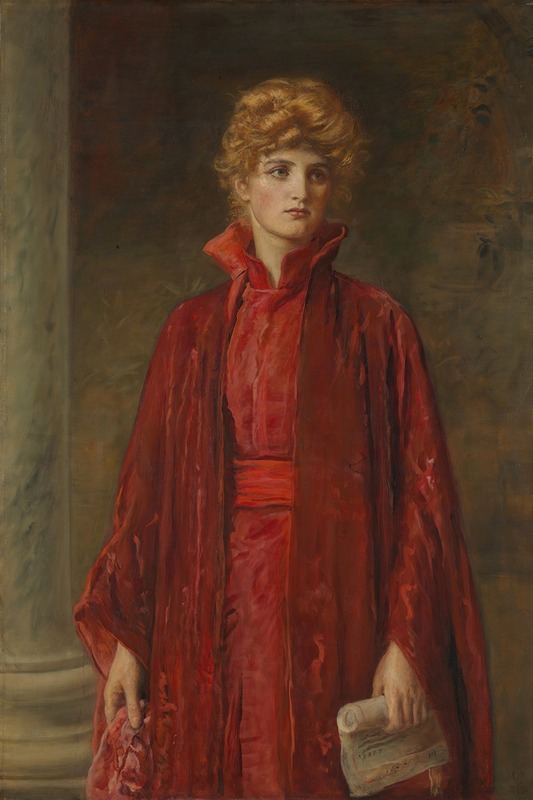
Portia
A hand-painted replica of Sir John Everett Millais’s masterpiece Portia, meticulously crafted by professional artists to capture the true essence of the original. Each piece is created with museum-quality canvas and rare mineral pigments, carefully painted by experienced artists with delicate brushstrokes and rich, layered colors to perfectly recreate the texture of the original artwork. Unlike machine-printed reproductions, this hand-painted version brings the painting to life, infused with the artist’s emotions and skill in every stroke. Whether for personal collection or home decoration, it instantly elevates the artistic atmosphere of any space.
Sir John Everett Millais, a prominent figure in the Pre-Raphaelite Brotherhood, painted "Portia" in 1886. This artwork is an exquisite representation of Millais' mature style, showcasing his ability to blend realism with a deep understanding of character and emotion. The painting depicts Portia, a character from William Shakespeare's play "The Merchant of Venice," who is one of Shakespeare's most intelligent and resourceful heroines.
In the play, Portia is a wealthy heiress who disguises herself as a male lawyer to save her husband's friend, Antonio, from a legal predicament. Millais captures Portia in a moment of contemplation, emphasizing her intelligence and determination. The painting is noted for its attention to detail, particularly in the rendering of textures and fabrics, which is characteristic of Millais' work.
Millais was known for his meticulous technique, and "Portia" is no exception. The painting exhibits his skill in capturing the subtleties of light and shadow, as well as his ability to convey the psychological depth of his subjects. Portia's expression is one of quiet confidence, reflecting her inner strength and the pivotal role she plays in the narrative of "The Merchant of Venice."
The composition of the painting is carefully balanced, with Portia positioned centrally, drawing the viewer's attention to her face and the thoughtful expression she wears. Millais' use of color is also noteworthy; he employs a rich palette that enhances the realism of the scene while also imbuing it with a sense of warmth and vitality.
"Portia" is a testament to Millais' ability to interpret literary characters with both fidelity and creativity. His portrayal of Portia goes beyond mere illustration, offering a nuanced exploration of her character that resonates with viewers familiar with Shakespeare's work. The painting reflects the Victorian fascination with Shakespearean themes and characters, which were often seen as embodying timeless human virtues and dilemmas.
The artwork is housed in the collection of the National Gallery of Victoria in Melbourne, Australia. It remains a significant piece within Millais' oeuvre, exemplifying his transition from the highly detailed and vibrant style of his early Pre-Raphaelite works to a more refined and mature approach. "Portia" continues to be appreciated for its artistic merit and its insightful portrayal of one of Shakespeare's most compelling female characters.
Millais' contribution to the art world extends beyond his paintings; he was a founding member of the Pre-Raphaelite Brotherhood, which sought to reform art by rejecting the mechanistic approach that had come to dominate the academic art scene. Through works like "Portia," Millais demonstrated the enduring power of narrative art and its capacity to engage with literature and history in meaningful ways.


















